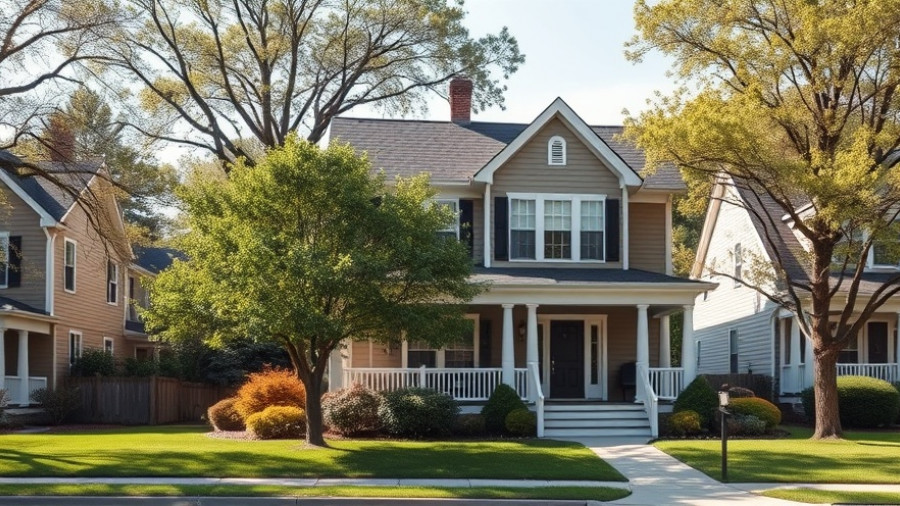
Deciding When to Lower Your Home's Price
Selling your home can be a challenging experience, especially if you're encountering a lack of interest from buyers. If your house isn't generating the desired attention, it may be time to consider a price reduction. In this guide, we'll explore the signs that indicate a price adjustment is necessary, delve into common strategies for effective pricing, and provide insights specifically tailored for sellers navigating today's evolving real estate market.
Understanding the Signs for Price Reduction
Before deciding to reduce the price of your home, it's essential to identify clear indicators that suggest a price adjustment is required. Here are some key signs:
- Lack of Interest: If your listing has remained stagnant for a few weeks with few showings, this can signal an overly ambitious price. Buyers often scan listings and may skip over homes that seem overpriced.
- No Offers: Receiving showings without any offers? This trend typically indicates potential buyers don’t find your property’s value to be justified at its current price.
- Negative Feedback: If feedback from realtors or buyers suggests that your property feels overpriced, it's crucial to consider this input as market reflection.
- Staying on the Market Too Long: If the Days on Market (DOM) for your home exceeds that of comparable homes, it can lead to a perception that your home has issues.
- Changing Market Conditions: Fluctuations in interest rates or shifts in local inventory can necessitate a price reduction to stay competitive.
- New Comparables: Keep an eye on new listings in your area. If similar homes are priced lower, your home may also need reevaluation.
Consequences of Overpricing
Overpricing your home can lead to multiple negative consequences:
- Missed Opportunities: The initial weeks of a listing are vital. If your home is overpriced, you may miss out on serious buyers who are eager to make offers.
- Stale Listing Stigma: Properties that linger on the market may acquire a “stale” reputation, leading potential buyers to speculate that something might be wrong.
- Lower Final Sale Price: In many cases, homes that are initially overpriced end up selling for less than what they would have if priced correctly from the outset.
- Increased Carrying Costs: Extended periods on the market increase maintenance and mortgage expenses, making a price reduction a smarter move.
Strategizing Your Price Reduction Approach
Once you’ve confirmed that a price reduction is needed, it’s wise to approach the adjustment strategically:
- Consult Your Agent: Your real estate agent can provide valuable insights based on the latest market data, helping you decide on an ideal price.
- Analyze Comparable Sales: Review recent sales of similar properties near you to determine the proper price point for your home.
- Consider Percentage Drops: A minor price cut may not draw attention. A reduction of 2-5% is often necessary to get buyers interested again.
- Revisit Marketing Strategies: After making a price adjustment, update your listing and consider utilizing targeted marketing through platforms like Zillow and Redfin.
The Art of Pricing in Today's Market
Given that buyer financing situations are fluctuating, understanding pricing within the current economic landscape is essential. The real estate market is cooling, and some regions are experiencing higher inventories than in previous years. It's crucial for sellers to adjust their expectations accordingly.
When setting your price, leverage tools such as Comparative Market Analyses (CMAs) to get an accurate picture of your home’s worth compared to similar local listings. Over 20% of homes have recently seen price cuts, reflecting the reality of today’s buyer's market. This statistic emphasizes the need for sellers to be flexible and realistic with their expectations.
Refreshing Your Listing
Stale listings require more than just a price drop. Consider relisting your home with updated photographs and listing details to revive interest. A fresh presentation can reinvigorate potential buyers’ interest and help them view the property in a new light.
Common Pricing Strategies That Work
Several effective strategies can help you price your home competitively:
- Market Value Pricing: Price your home based on a CMA, ensuring that your listed price reflects the recent sales of similar properties in your neighborhood.
- Competitive Underpricing: This method involves listing your home slightly below market value to create greater interest and potential bidding wars.
- Search-Aware Pricing: Utilize common search thresholds when setting your price; for example, instead of listing for $300,000, consider listing at $299,900 to increase visibility.
- Seasonal Pricing: Be mindful of seasonal trends; the spring and summer usually see more buyer activity than the fall and winter.
Conclusion: Take Action
Finalizing the right price for your home is a pivotal aspect of the selling process. It requires careful analysis of your local real estate market and an understanding of current buyer behavior. If your home isn’t getting the traction you expected, reevaluate your strategy and consult with a trusted real estate agent.
Whether you are deciding to lower your home price or exploring new strategies, remain proactive to ensure a successful sale. Remember, pricing is not a one-time decision but an ongoing process that should be adjusted based on market feedback. Stay informed, flexible, and ready to pivot as needs arise.
 Add Row
Add Row  Add
Add 



Write A Comment